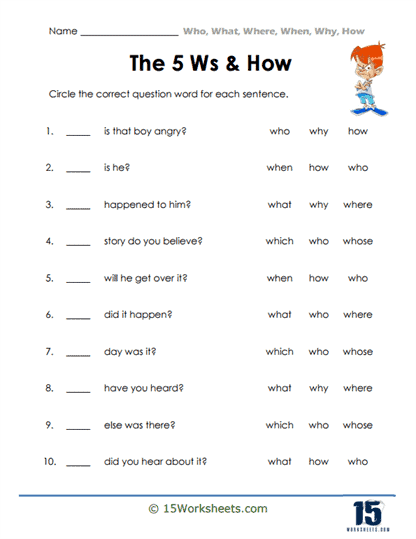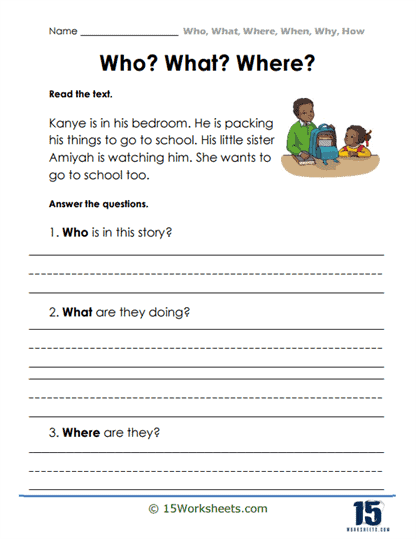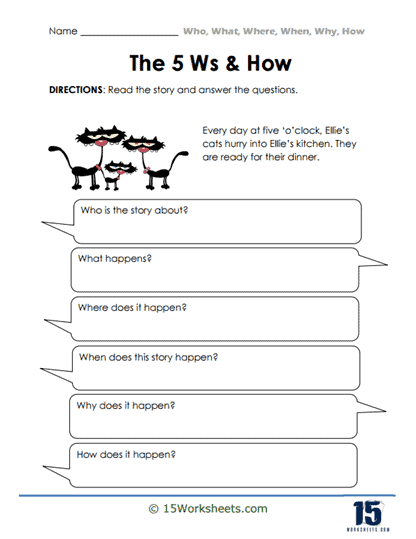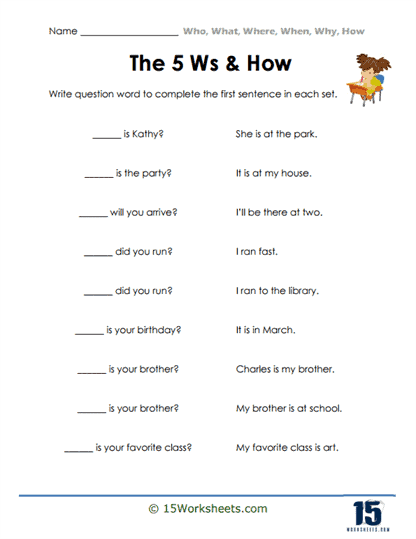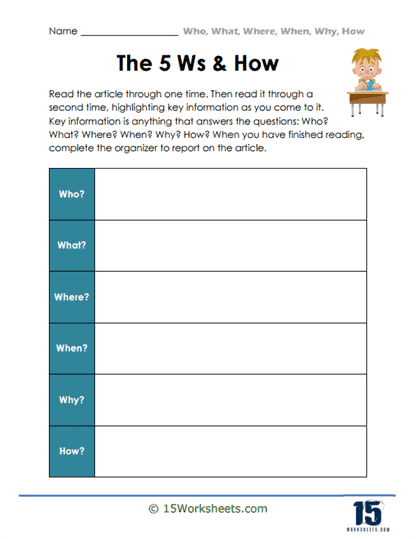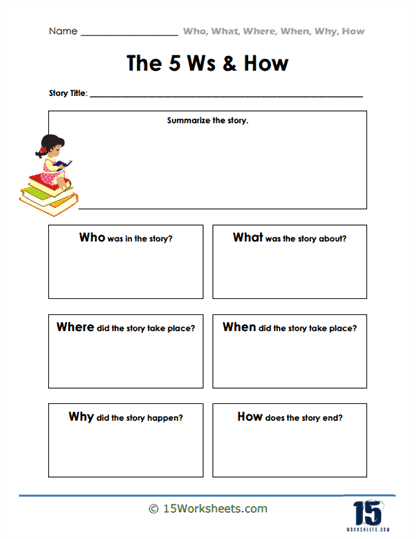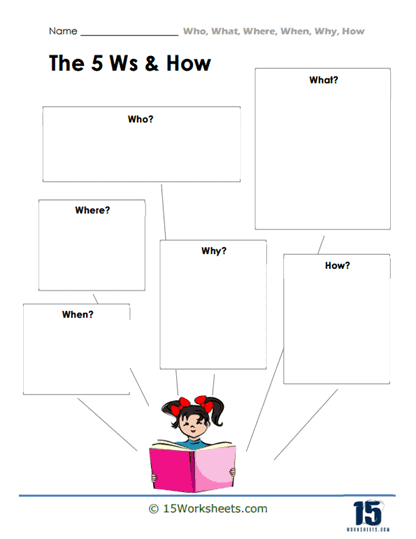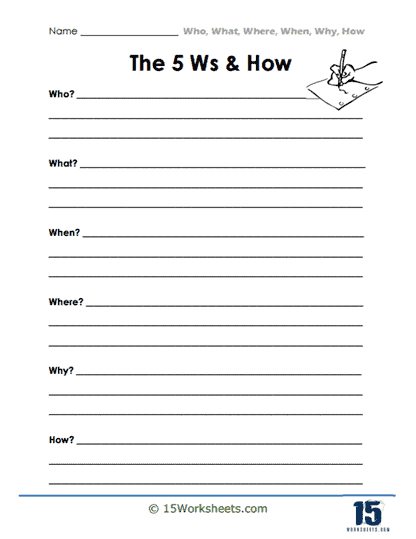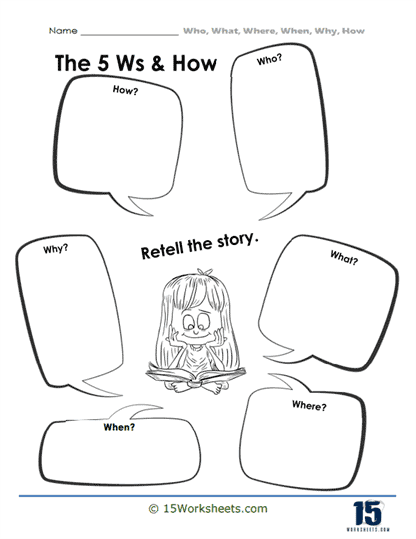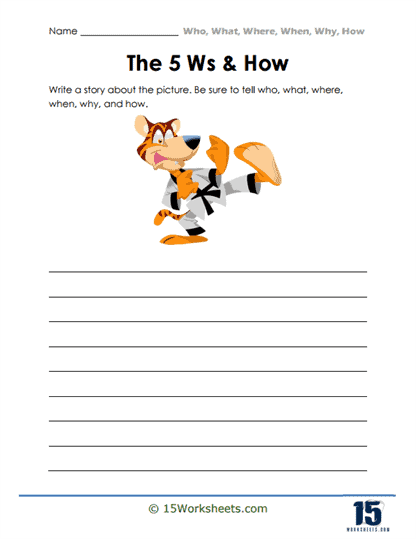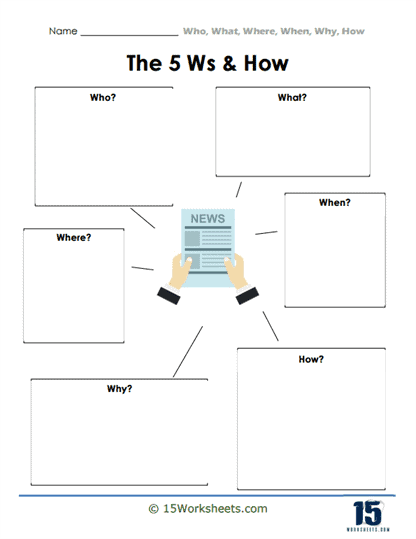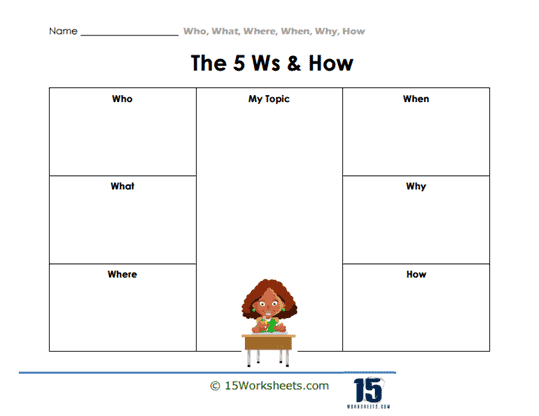Who, What, Where, When, Why, How Worksheets
About These 15 Worksheets
These worksheets focus on the fundamental aspects of information gathering and story comprehension, which are crucial in both academic and real-world contexts. By encouraging students to ask and answer these six essential questions, the worksheets aim to develop a deeper understanding of texts, events, concepts, and processes. Let’s explore the various exercises found in these worksheets and how they contribute to improving students’ writing and reasoning abilities.
These worksheets are great for developing students’ writing and reasoning skills. By guiding students through a process of detailed questioning and analysis, these worksheets foster a deeper understanding of texts, enhance narrative and expository writing skills, and cultivate analytical and critical thinking abilities. The exercises found within these worksheets prepare students for a wide range of academic challenges and real-world situations, ensuring they possess the skills necessary to gather, analyze, and communicate information effectively. Regular practice with these worksheets can lead to significant improvements in students’ academic performance and their ability to think critically and creatively about the world around them.
Types of Exercises
1. Reading Comprehension
Students are presented with a passage and are asked to identify the who, what, where, when, why, and how within the text. This exercise improves reading comprehension by encouraging students to focus on key details and the overall context of the passage.
2. Story Analysis
In these exercises, students analyze a story or narrative by breaking it down into its constituent elements: who (characters), what (plot), where (setting), when (time), why (motives), and how (the manner in which events unfold). This analysis helps in understanding narrative structure and enhances critical thinking.
3. Event Investigation
Students are given a description of an event (historical, current, or hypothetical) and must dissect it using the 5Ws and H. This exercise promotes investigative skills and encourages students to think like journalists or detectives, piecing together the full picture of an event.
4. Creative Writing Prompts
Worksheets may provide prompts that require students to create their own stories or descriptions based on the 5Ws and H framework. This fosters creativity, planning, and organizational skills, as students must think critically about how each element will be incorporated into their writing.
5. Informational Text Analysis
Similar to reading comprehension, but focused on non-fiction texts, students analyze informational texts to extract key facts and concepts according to who, what, where, when, why, and how. This exercise enhances understanding of expository or argumentative writing and factual reporting.
6. Problem-Solving Exercises
Students are presented with a problem and must use the 5Ws and H to propose solutions. This approach teaches them to comprehensively understand a problem before attempting to solve it, improving reasoning and analytical skills.
7. Interview Preparation
Worksheets might simulate interview scenarios where students must prepare questions to ask a subject. These questions should cover all aspects of the 5Ws and H, training students in thorough information gathering and communication skills.
Impact on Writing and Reasoning Skills
Practicing with 5Ws and H Worksheets significantly impacts students’ abilities in several key areas:
1. Enhanced Comprehension Skills
By systematically questioning and answering the 5Ws and H, students learn to extract vital information from texts, improving their comprehension. This methodical approach ensures no critical detail is overlooked, leading to a more profound understanding of the material.
2. Improved Analytical Thinking
Analyzing stories, events, or problems through the 5Ws and H framework sharpens students’ analytical thinking. They learn to dissect complex information into manageable parts, enhancing their ability to understand and communicate about various subjects.
3. Structured Writing
When students plan and write stories or reports using the 5Ws and H, their writing becomes more structured and coherent. This approach ensures all critical aspects of a narrative or explanation are covered, making their writing more comprehensive and engaging.
4. Critical Thinking Enhancement
Investigating events or solving problems using the 5Ws and H encourages students to think critically about the information before them. They learn to ask probing questions, seek out detailed answers, and critically evaluate the information to form well-reasoned conclusions.
5. Creative Expression
Creative writing exercises based on the 5Ws and H framework encourage students to think creatively about how to weave together various elements into a cohesive story. This not only enhances their creativity but also teaches them the importance of narrative elements and how they interact.
6. Information Gathering Skills
Preparing interview questions or investigating events teaches students effective information gathering techniques. They learn the importance of comprehensive questioning and how to seek out detailed and specific information, skills that are valuable in academic research and in the workforce.
7. Problem-Solving Abilities
Using the 5Ws and H to approach and solve problems teaches students a holistic problem-solving method. They learn to understand a problem fully before proposing solutions, a critical skill in both academic settings and everyday life.




